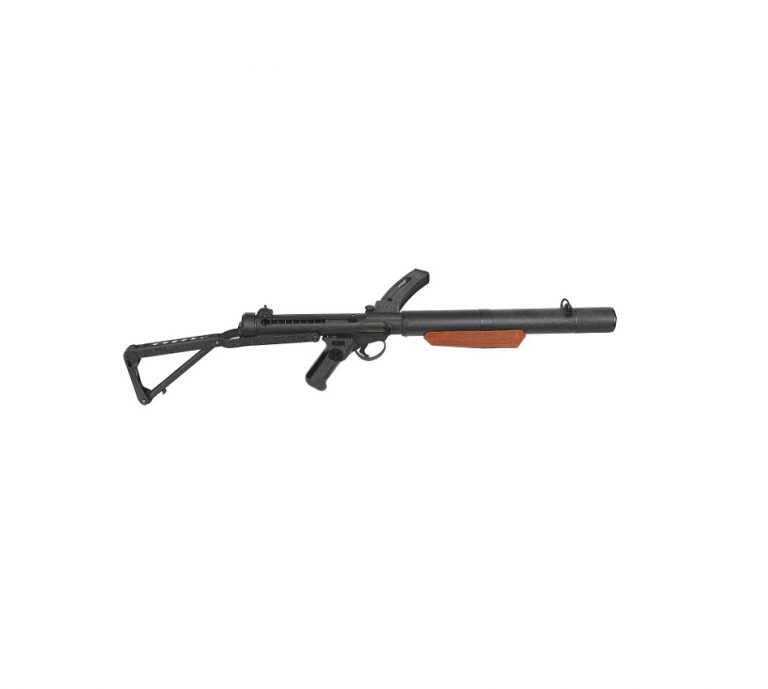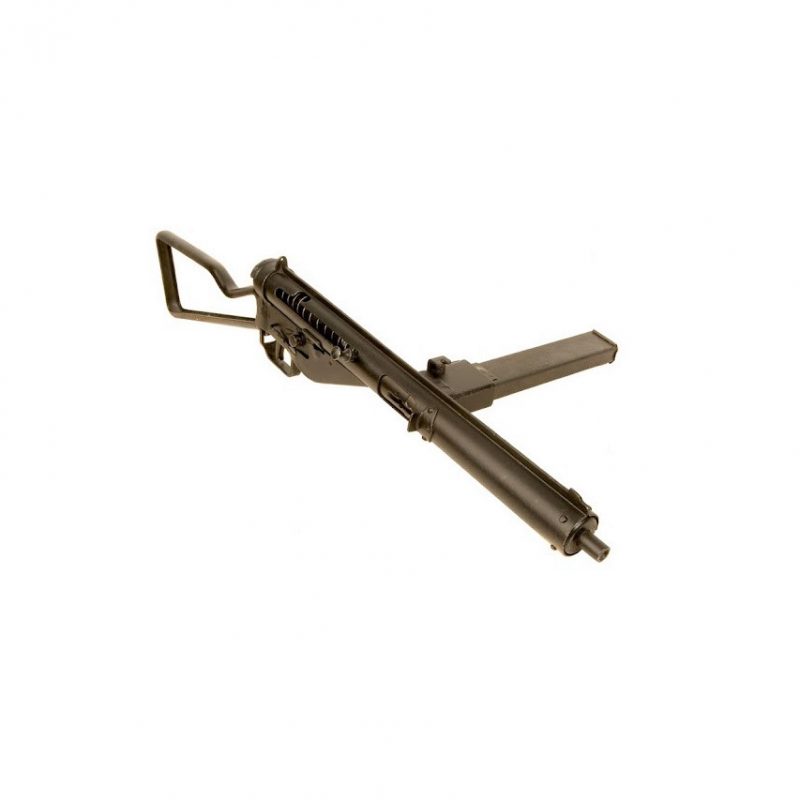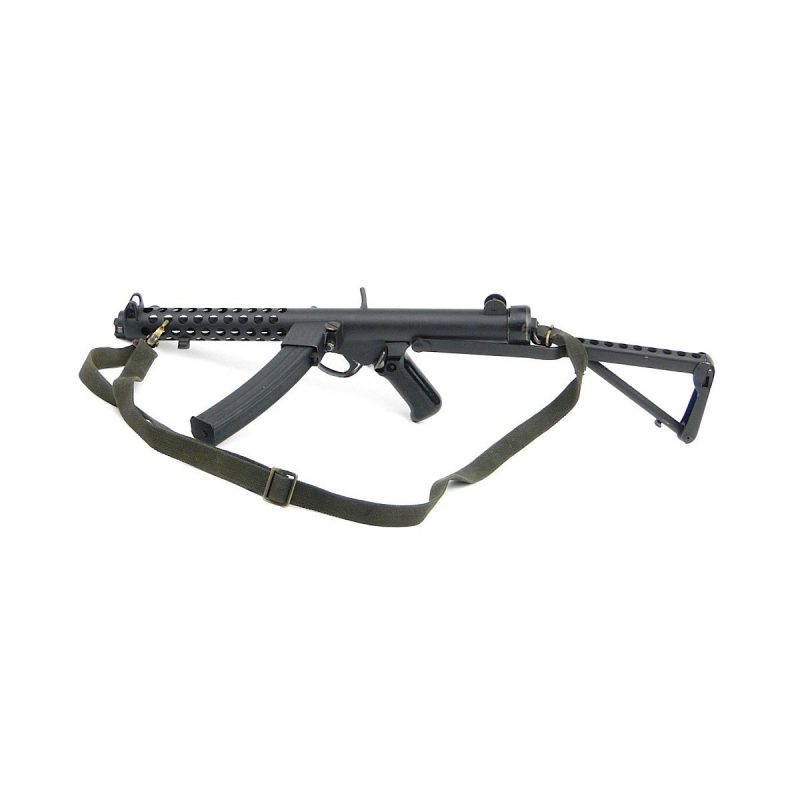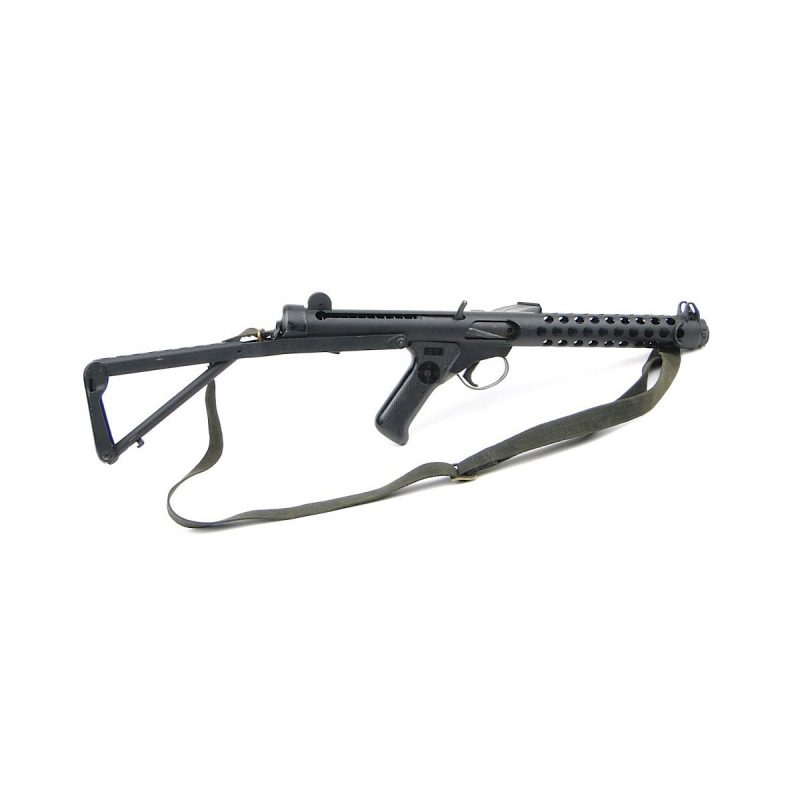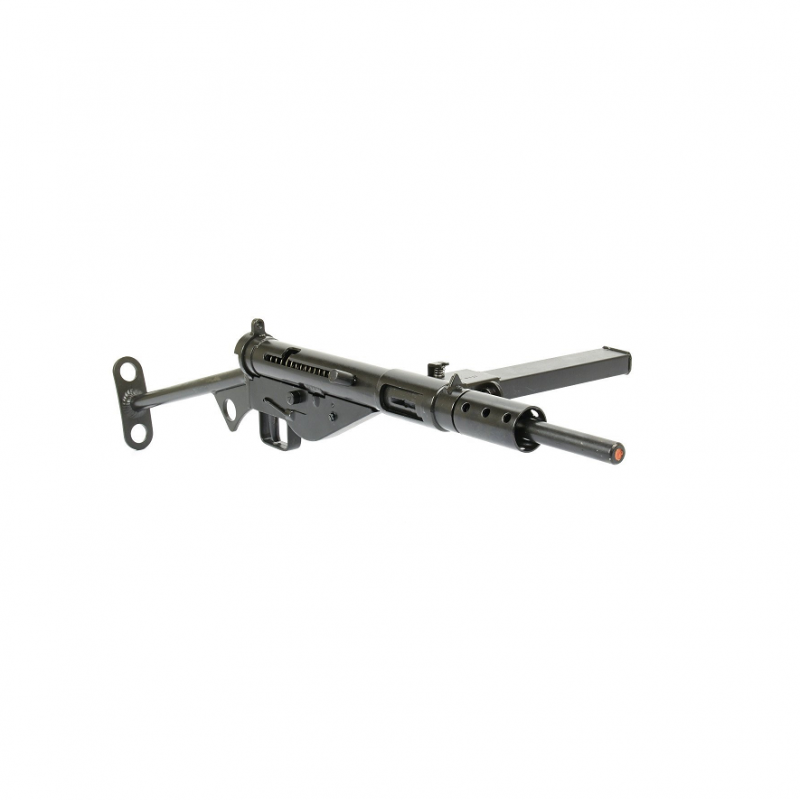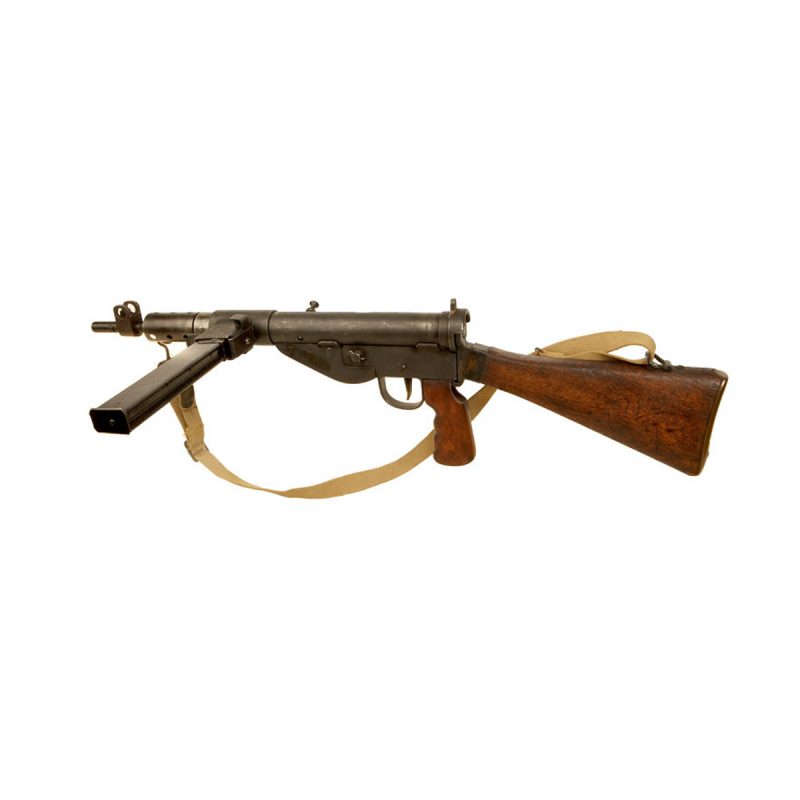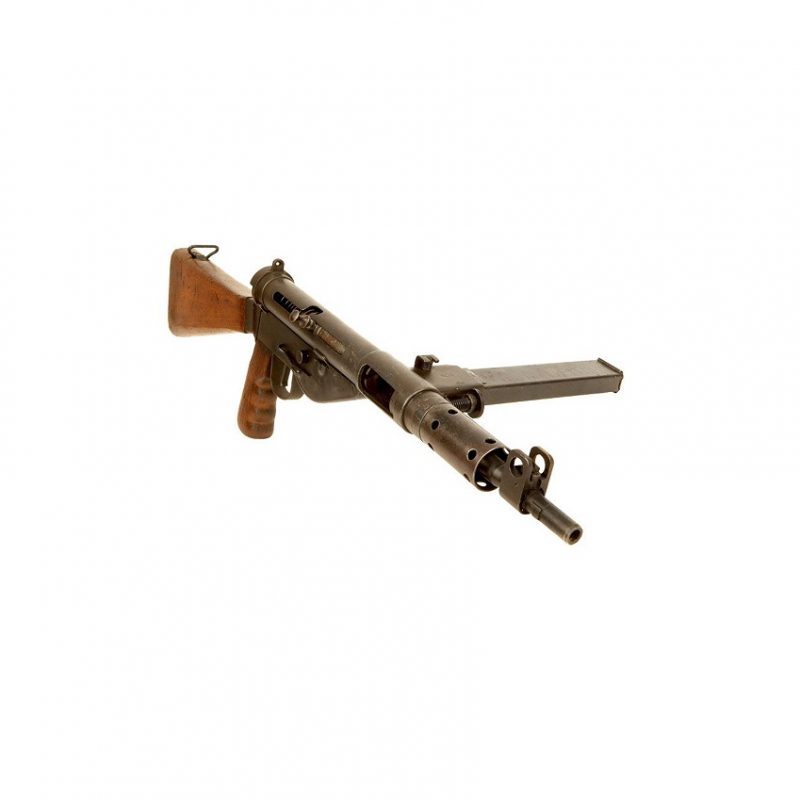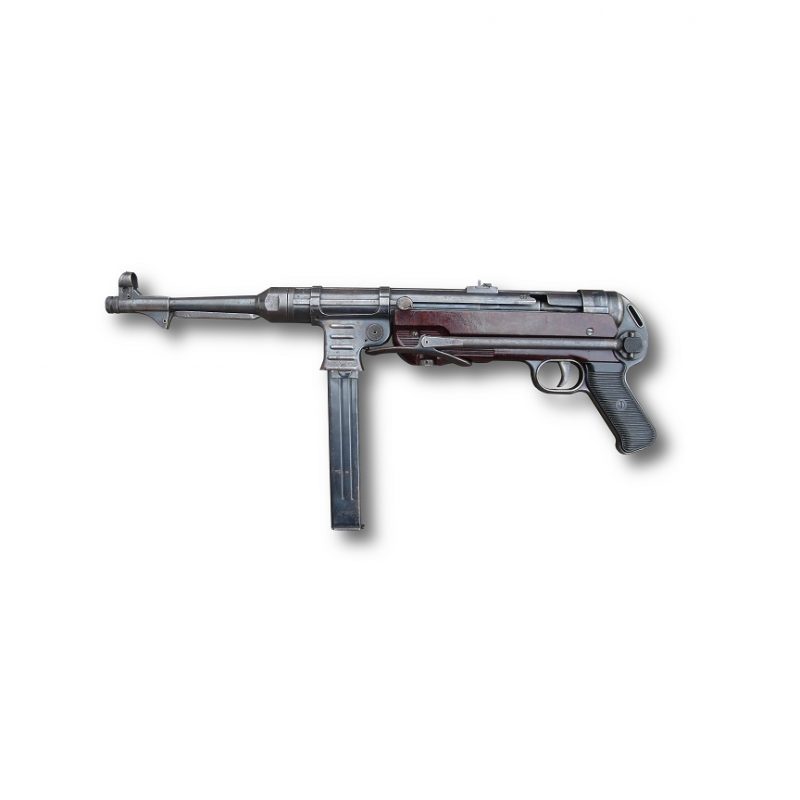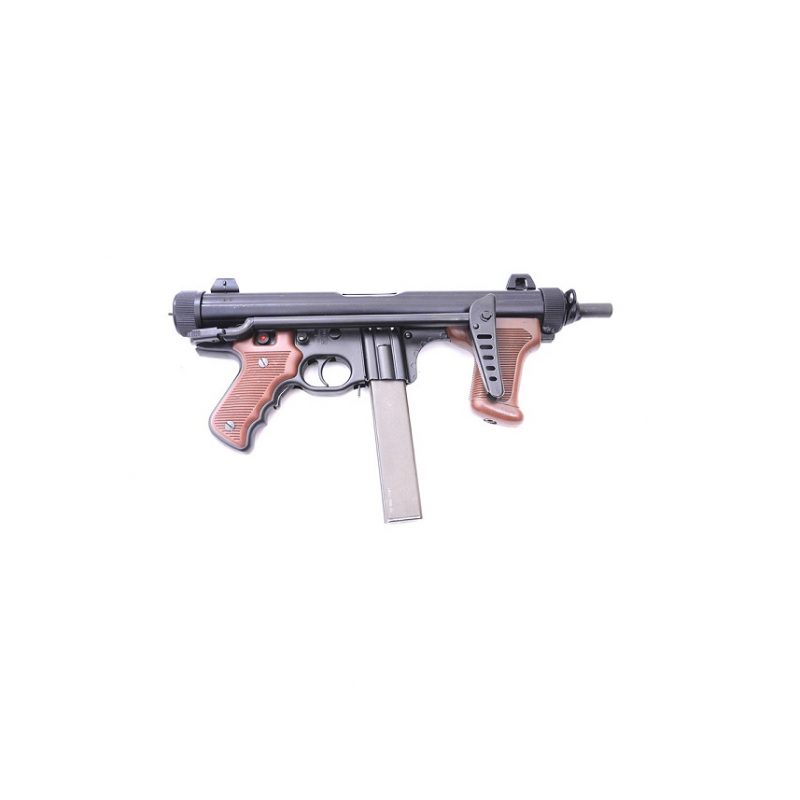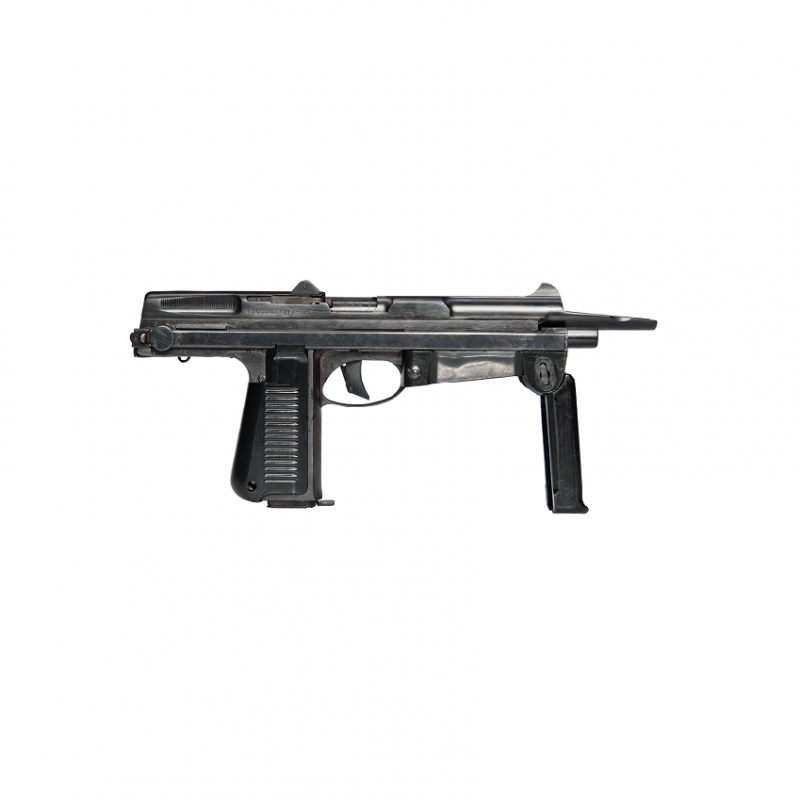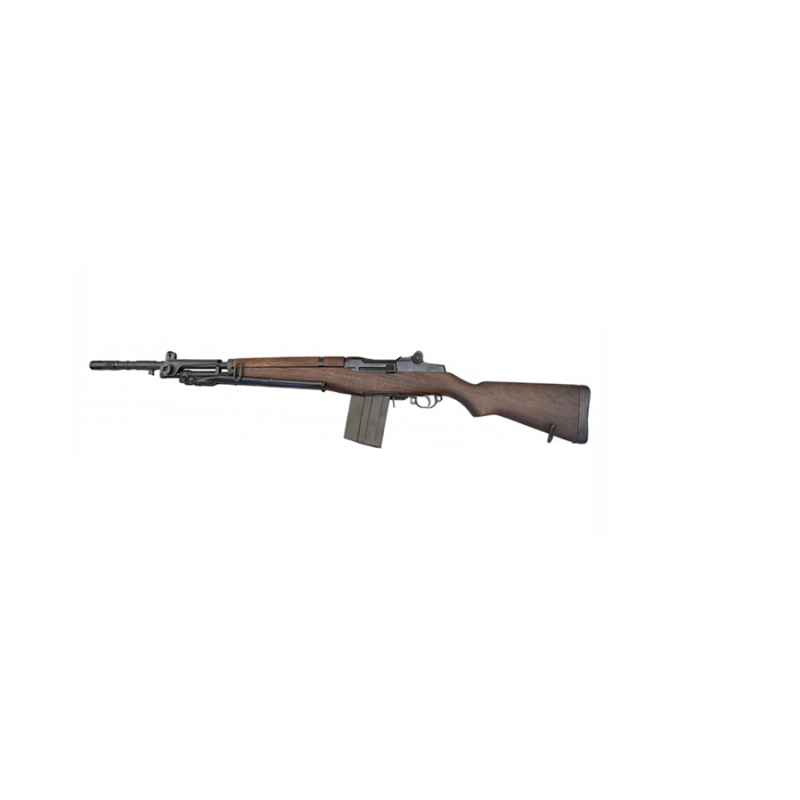Description
In 1944, the British General Staff issued a specification for a new submachine gun to replace the hurriedly produced Sten. It was decided that weapon should not weigh more than six pounds (2.7 kg), should continue to fire the 9x19mm Parabellum ammunition as used in the Sten. It should also have a rate of fire of no more than 500 rpm and be sufficiently accurate to allow five consecutive shots (fired in semi-automatic mode) to hit a one-foot-square target at a distance of 100 yd (91 m).
Trials were eventually held in 1947 and up against the Sterling were entrants from Enfield, BSA and even one from Australia. The in service Sten Mk V also took part in the trails to use as a benchmark. The Sterling emerged the champion and in 1951 the order to commence production was officially placed by the Army.
It slowly stated to replace the Mk V Sten in 1953 and was named “Sub-Machine Gun L2A1”. The last non-suppressed variation was called the L2A3, however the design changes were minimal.
This suppressed version, designated the L34A1 or Mk V, was developed for use with special forces units (prior to the widespread introduction to the MP5SD). The overall weapon is basically the same, with the obvious additions of an over-barrel suppressor and forward/under-barrel handgrip.
The L34A1 design proved so successful that British Royal Marines would find it being used against them by Argentinian special forces during the initial invasion of the Falkland Islands in 1982.
Designer: George William Patchett
Designed: 1944
Manufacturer: Sterling Armaments Company
Produced: 1953-1988
